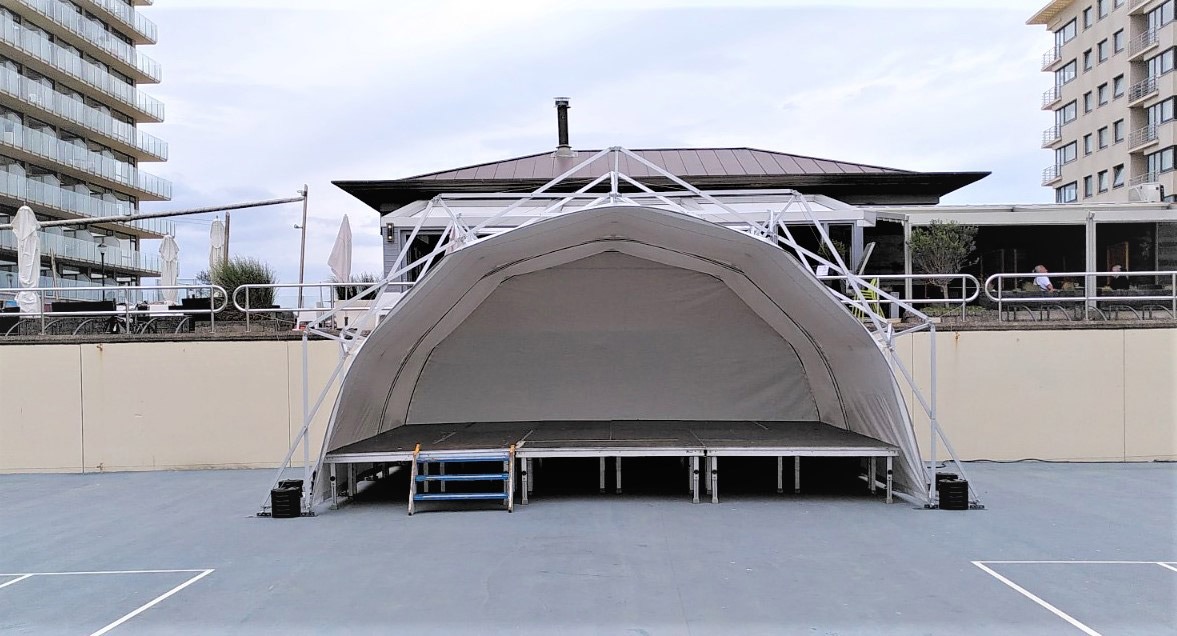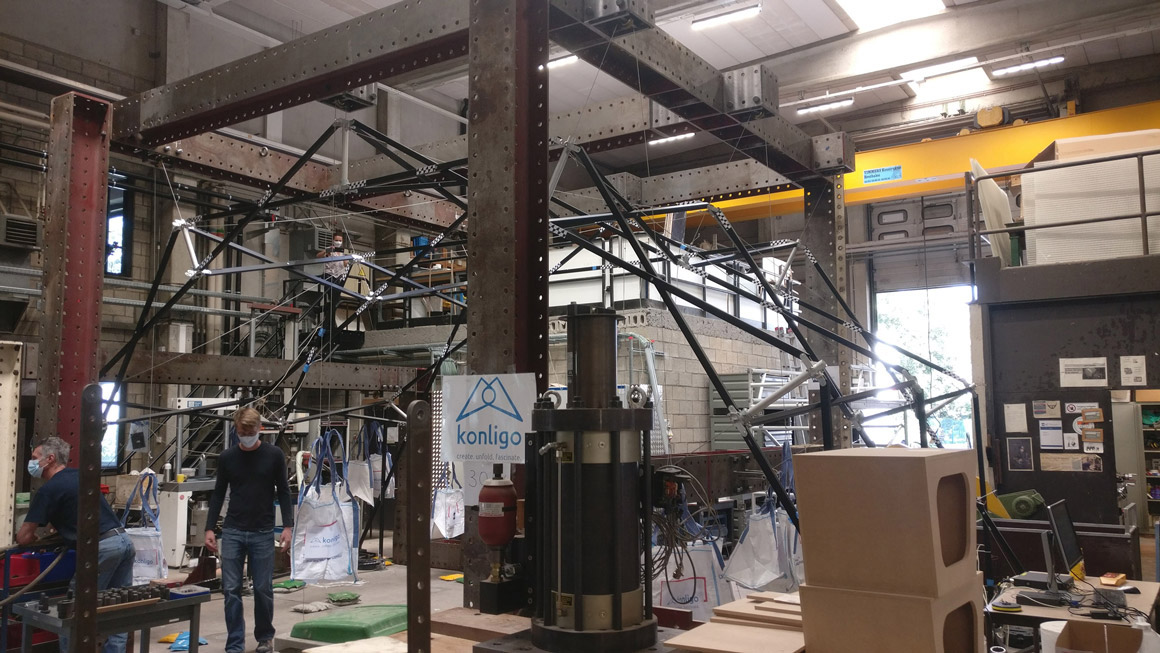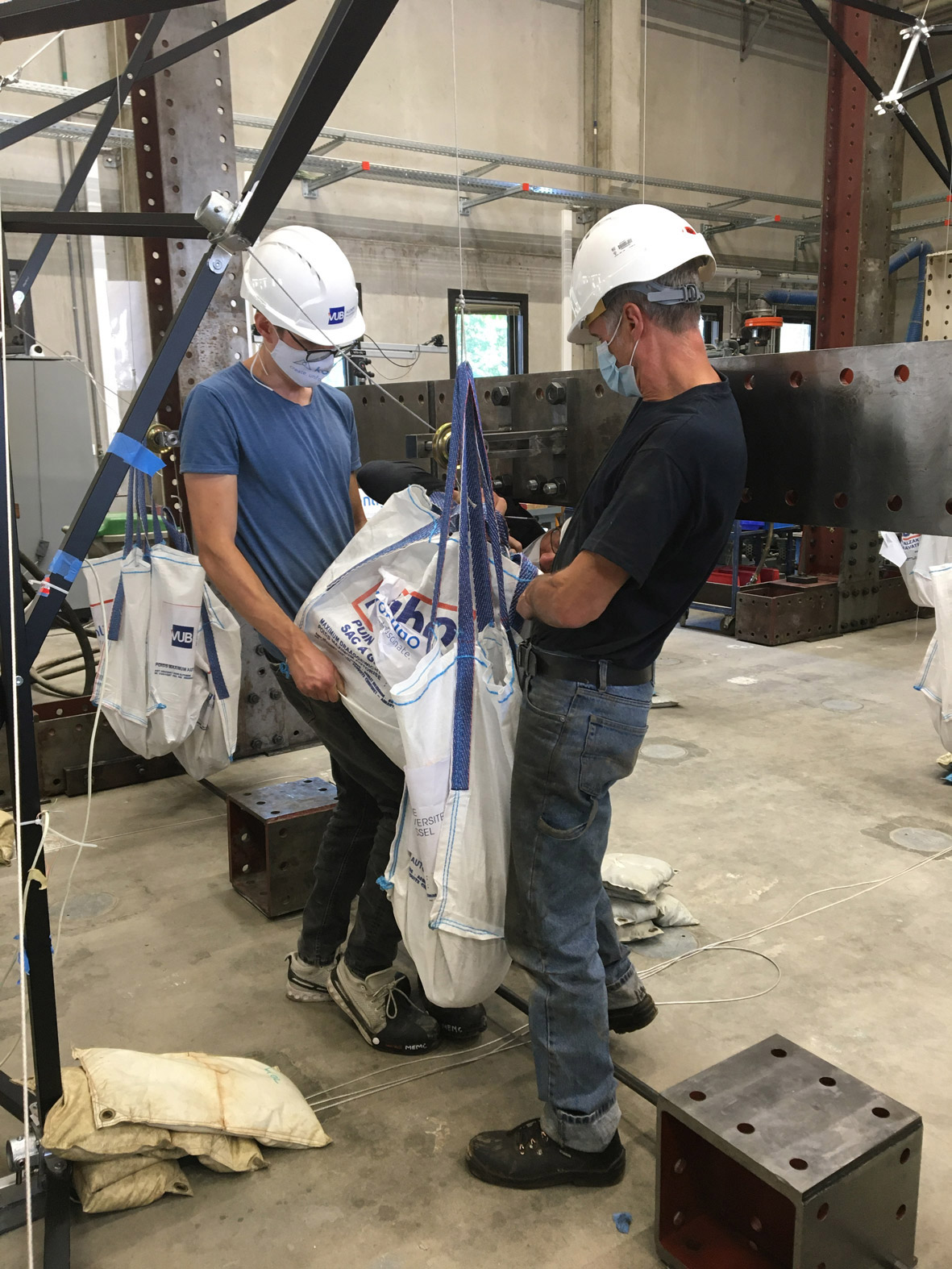We want everyone to be able to safely enjoy the use of a Fastival, even in harsh weather. Because we know that the last thing that you, as an event organizer, want to worry about is a tent collapsing. This is what our structures are designed for and why we believe robustness is a very important element of the FasTival. For the same reason one of our projects this summer was to test the wind resistance of the FasTival when there is a membrane on top and at the back (as is the case on this picture).
 A tent or structure such as the Fastival catches lots of wind. When you do not anchor it firmly to the ground (with for example weights or pins) there is a risk that the wind lifts the structure. Look what happens to the guy in this video and you’ll understand what we mean: https://youtu.be/qF4HyN8-QrE
A tent or structure such as the Fastival catches lots of wind. When you do not anchor it firmly to the ground (with for example weights or pins) there is a risk that the wind lifts the structure. Look what happens to the guy in this video and you’ll understand what we mean: https://youtu.be/qF4HyN8-QrE
At the same time, with enough wind, the beams might deform, and a tent might collapse. In fact, we tested this with a previous version of the Fastival by keeping it outside until the biggest storm of the year hit it at full force. What we have seen is that the structure deforms (but does not fully collapse, nor blow away). This storm, Ciara, had peak winds of more than 100 km/h. The fact that our structure did not hold was not a surprise to us. At the time we were actually more interested in the behavior of the structure at the moment it gives in than on keeping it standing. However, we decided this summer to work on a new version of the FasTival which is even stronger than the one we have previously tested.
Lab testing
With our newer and stronger version of the FasTival we wanted to do a more controlled test to precisely see the forces it can withstand and to acquire a certification from Vinçotte, a Belgian accredited inspection and certification organisation.
We have collaborated with the Vrije Universiteit Brussels (VUB) to build a test setup that replicates wind forces with pulleys and weights, a setup that has been agreed to by Vinçotte
By pulling the structure up, down or to the side, the forces of the wind are mimicked. Anyone as observant as Sherlock Holmes might notice that there is no membrane on the pictures. This is true, but does not matter for the testing, as the weights needed and used were calculated based on windforces pushing against the structure with a top and back membrane as shown in the picture at the top of this article.
With the use of camera’s and sensors we were able to record the deformation of the beams and measure with how much force the beams are pulled at, to verify that the wind forces do not damage the beams in ways invisible to the eye. This was also done in order to compare test data with known facts on what aluminium beams can resist. The total of all data gives us a good understanding of whether there is a risk of (permanent) damage on the structure at certain wind speeds.
The testing itself involved putting weights into the bags hanging to the structure, with in certain load cases more than 100kg in some of the bags. The highest total of weights hanging in those bags, pulling at our structure, was more than 1400kg! So indeed, it wasn’t just heavy on the structure, but also a heavy work-out for us.
The results
The first outcome of the test has been very positive. We were able to load the structure with the weights necessary to replicate 80km/h wind speeds. For the case when wind is blowing directly onto the side of our FasTival the total weight was 775kg. For the case when wind is coming through the opening at the front, blowing through the structure onto the back, the total weight was even more: 1470kg! Of course, because of the way this was set up, the weight was not all pulling down on the structure, but also sideways, and upwards even. (So the

1470 kg of the testing is not the same as simply hanging 1470kg to the structure).
What these results mean is that you would be able to leave our structure outside, with the top and back membrane on there, in winds of up to 80 km/h. When higher winds are predicted additional measures need to be taken (such as the removal of the membranes).
Final thoughts
When reading this article, it might sound like the testing was quite easy… But in reality it took many hours and days of preparation together with the VUB, to design and build the setup and to do the testing. That’s why we want to give a big ‘Thank you!’ to everyone at the VUB who helped us. The results are of course what matters, and these show us how robust the FasTival really is. Together with its flexibility, fast erection, and beautiful design this makes the FasTival a unique structure that could give just that little bit extra to your event, without having to worry about safety issues. Take a look at our gallery to see some successful outdoor events that have used the FasTival.
We will make more video and photo material of the testing available as soon as possible, to give you an even better idea of what the testing looked like in practice.